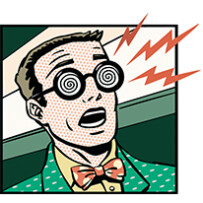A Complete Guide to Trade Show Graphics

Graphics are a vital component to every trade show booth. Effective graphics will capture your target audience and drive traffic to your booth. Maximize your booth visibility by ensuring that your booth graphics are the right size, color, and are placed properly with the booth.
According to the article, “A Rookie’s Guide to Graphics” by Candy Adams, trade show exhibits should grab the attention of attendees in three seconds or less. In her article, Candy provides 7 basic tips to consider when designing your graphics for your next event.
- Dimensions. Your trade show graphics should be appropriate size for your booth. Large graphics will quickly to grab attention of attendees and create awareness about your brand and products from afar. Smaller graphics should be designed to capture the attendees’ focus once they are inside the booth. Focus on a few large, well-cropped graphic instead of a large number of small graphics spread throughout the booth.
- Placement. Graphics should be placed in high traffic areas to drive guests to your booth. Large, long-range graphics are typically hung above island and peninsula exhibits as well as on towers and columns inside trade show booths. However, these types of graphics are not always the best option. Keep in mind that competitors can easily block your graphics with larger ones. For best results, opt for mid-range graphics that can be placed 10 to 50 feet from the aisle. Mid-range graphics are best suited for booths that are not island or peninsula-style booths and can be read easily from 50 feet away. Enhance your signage with external lighting, rotating turntables, and fans to create movement on hanging banners.
- Messaging. Keep it simple. Limited the amount of text on your graphics. For maximum engagement, limit text to six words on your graphics. Graphics that contain too much text can be difficult for trade show attendees to read. Include product benefits instead of product features. Ensure your branding message answers the question, “What’s in it for me?” Test your message by asking three important questions, “What problem do attendees have that they’re trying to solve?” “Why should attendees want our product?” and “What makes our product different or better than our competitors’ products?”
- Color and Contrast. Text should be clearly legible on all of your graphics. Select text colors with a sharp contrast to the background. Use dark text over a light background or light text over a dark background. Reference a color wheel to ensure your color combinations match up correctly. Create a well balanced, professional look by limiting your color usage to three colors. The colors you choose should match your branding guidelines to maintain a cohesive brand.
- Imagery. Including imagery on your graphics may not be necessary for all brands. Images could be distracting if your logo is very well known. Include high quality, high-res lifestyle images of people using your products to capture your target audience. Remember to purchase the biggest, highest resolution file available.
- Typefaces. Fonts can convey a variety of emotions. Fonts are divided into three major categories – serif fonts, sans serif, and decorative fonts. Be sure to select the appropriate font that is best suited for your branding message. Limit your fonts to two styles and choose the right size for your guests. “Font size should be 1 inch tall for every 3 feet attendees with stand from.” If your guests will be 9 feet away from your graphics then your type should be 9 inches tall.
- Durability. Graphics can be expensive. Choose graphics that can be used at multiple trade shows if you are on a limited budget. Flexible textiles (fabric, Duraflex and adhesive vinyl) and rigid (Sintra, plastic, paper, and foam) are great durable options that can ensure your graphics can be re-used. Use sturdy protective casing when transporting your graphics for additional support.
Read the full article.

 Combining Old and New :: Altec Lansing
Combining Old and New :: Altec Lansing Customizable Entrances :: Life Technologies
Customizable Entrances :: Life Technologies Frankfurt, Germany :: Luminus Devices
Frankfurt, Germany :: Luminus Devices